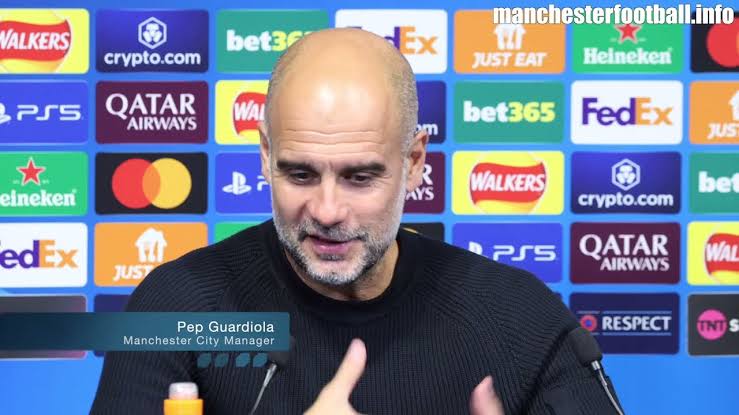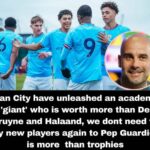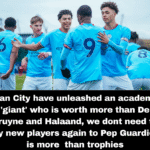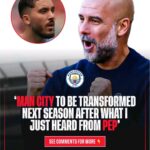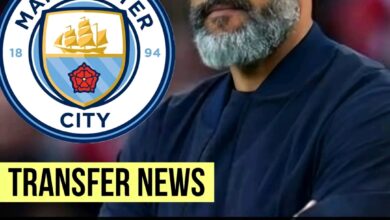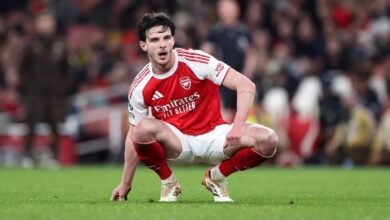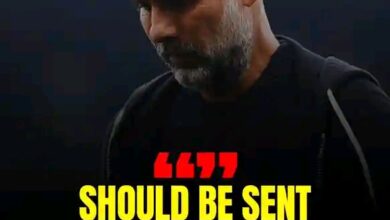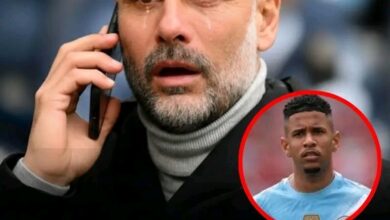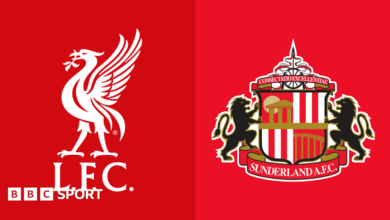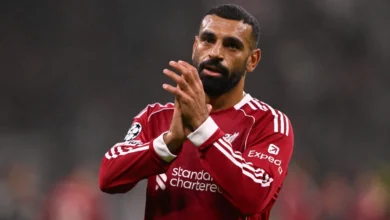Man City have unleashed an academy ‘giant’ to help the Team
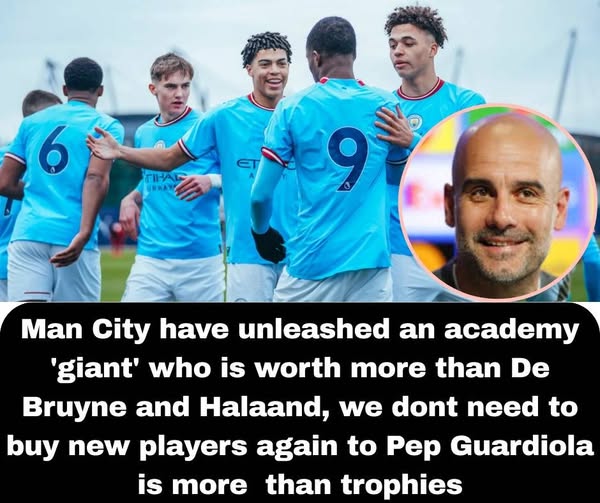
Manchester City’s academy transformation began long before O’Reilly’s breakthrough, rooted in the club’s recognition that sustainable success required more than just financial muscle in the transfer market. The City Football Academy, opened in 2014, represented a philosophical shift as much as an architectural one – a commitment to developing players who could not only contribute to the first team but embody the club’s tactical identity from their formative years.
The academy’s recent achievements provide context for O’Reilly’s emergence. This season alone, the youth teams compiled a remarkable 27-game winning streak at Under-18 level, showcasing the systematic excellence being cultivated behind the scenes. While the FA Youth Cup final against Aston Villa ended in disappointment, the journey to that final demonstrated the depth of talent being nurtured within the academy system.
Yet statistics and trophies tell only part of the story. The true measure of the academy’s success lies in its ability to produce players capable of making the quantum leap from youth football to competing alongside world-class professionals. This transition, fraught with psychological, physical, and tactical challenges, has claimed countless promising careers. O’Reilly’s navigation of this treacherous path offers invaluable insights into what separates potential from achievement.
Under-21s coach Ben Wilkinson, who has overseen much of O’Reilly’s development, emphasizes the non-linear nature of youth development: “He’s had a journey in terms of actual development. It’s not like a linear journey.” This acknowledgment of the complexity inherent in player development reflects a mature understanding of the process – one that prioritizes long-term growth over short-term results.
The Crucible Years: Patience in the Face of Uncertainty
O’Reilly’s journey to first-team prominence was far from predetermined. During his scholarship period, serious questions emerged about his developmental trajectory. While his technical ability had always been evident, physical concerns created genuine uncertainty about his future prospects. The decision to retain him with the Under-18s for his second year, rather than promoting him to the Under-21s, represented a calculated risk that could have derailed his development entirely.
“In his second year of Under-18s two years ago, he stayed with the Under-18s rather than going up because he was a boy who, when you looked at him, he still hadn’t grown anywhere into his body,” Wilkinson explained. “He needed a little bit more time because you could see that he was just starting to come and he had the potential to be a real physical specimen, but he was a long way from being there.”
This period of uncertainty tests not only the player’s resilience but also the club’s commitment to its developmental philosophy. In an era where immediate results often dictate decisions, City’s willingness to invest additional time in O’Reilly’s development – without guarantee of success – demonstrates the patience that separates elite academies from their peers.
The individualized approach adopted during this crucial period involved collaboration between academy coaches, sports scientists, and medical staff. Training loads were carefully calibrated to accommodate O’Reilly’s physical maturation while maintaining his technical development. Recovery protocols were adjusted to account for the additional stress placed on his growing frame. Nutritional strategies were implemented to support healthy development without compromising his natural athleticism.
This holistic approach to development reflects City’s understanding that creating elite players requires more than just technical coaching. The integration of sports science, psychology, and tactical education creates an environment where talented individuals can maximize their potential while minimizing the risk of burnout or injury that has historically plagued promising youngsters.
The Physical Metamorphosis: From Prospect to Athlete
The transformation of O’Reilly from a physically underdeveloped teenager to what academy coaches now describe as “a giant, a fantastic athlete” represents one of the most remarkable aspects of his development. This change was not accidental but the result of a meticulously planned and executed physical development program.
Academy strength and conditioning coaches designed a specialized regimen that prioritized functional strength over aesthetic gains. The focus was on building a foundation of movement quality, injury resilience, and athletic performance that would serve O’Reilly throughout his career. This approach required patience from all involved, as the benefits were not immediately apparent but would compound over time.
The program included progressive resistance training that adapted to O’Reilly’s changing physical needs as he matured. Movement pattern coaching helped him develop efficiency and reduce injury risk as his body changed. Plyometric training improved his power output and reactive strength. Endurance work built the aerobic base necessary for the demands of professional football.
The results of this patient approach are evident in O’Reilly’s current physical profile. His top speed has increased by nearly 7% over the past two seasons, while his recovery rates between high-intensity efforts have improved dramatically. These improvements have been crucial to his adaptation to left-back, where the demands of repeated sprints and quick transitions between attacking and defensive phases are paramount.
Perhaps most significantly, O’Reilly’s dueling statistics have shown remarkable improvement. In his seven starts at left-back, he has won 68% of his defensive challenges – a figure that compares favorably with specialist defenders across the Premier League. This success in physical confrontations represents the culmination of years of patient development work.
Catching the Eye of a Perfectionist
Pep Guardiola’s reputation for demanding excellence from every player, regardless of age or experience, makes his faith in O’Reilly particularly significant. The manager’s decision to include the young player in pre-season preparations represented a crucial vote of confidence – one that came with immense pressure and opportunity in equal measure.
“Pep doesn’t hang around with people that don’t add to the squad,” noted an academy coach familiar with O’Reilly’s development. “If you’re young and excited to come in, if you don’t produce or behave like a first team player, you don’t last long.” This assessment highlights the psychological demands placed on academy graduates making the transition to senior football.
For much of the early season, O’Reilly demonstrated the patience required to thrive in this environment. Despite being promoted to the first-team squad, meaningful minutes proved elusive. His start against Salford City in the FA Cup represented just his third appearance, and as recently as March, he found himself excluded from matchday squads as Guardiola prioritized the players he deemed most crucial to the team’s ambitions.
This period of limited opportunities tests the mental resilience of even the most talented prospects. The ability to maintain standards in training, remain positive despite disappointment, and be ready when opportunity arises separates those who succeed from those who fall by the wayside. O’Reilly’s response to this challenge would prove crucial to his eventual breakthrough.
The Bournemouth Revelation: Necessity Meets Opportunity
The pivotal moment in O’Reilly’s season came on a March afternoon at the Vitality Stadium, with Manchester City trailing 1-0 to Bournemouth in their FA Cup quarter-final. Facing the potential end of their domestic cup ambitions, Guardiola made a decision that would fundamentally alter the trajectory of both the match and O’Reilly’s career.
The decision to introduce O’Reilly at left-back – a position entirely foreign to the natural attacking midfielder – represented either tactical desperation or inspired innovation. What followed suggested the latter. O’Reilly delivered two match-winning assists, orchestrating a dramatic comeback that preserved City’s cup hopes while revealing previously unknown dimensions of his game.
“Sometimes in football, necessity breeds invention,” explains former City defender Joleon Lescott. “Pep has always valued players who can understand and implement multiple positions. What’s remarkable about Nico is how quickly he’s adapted to the defensive responsibilities while still offering so much going forward.”
The tactical gamble revealed O’Reilly’s exceptional spatial awareness and football intelligence. His ability to understand positioning, timing, and decision-making in an unfamiliar role demonstrated the kind of footballing IQ that cannot be taught but can be nurtured through proper development.
Since that breakthrough performance, O’Reilly has started every match for which he’s been available, establishing himself ahead of established internationals in terms of minutes played. More impressively, City have recorded five clean sheets in his seven starts at left-back, conceding goals in just two fixtures – a defensive record that has rejuvenated their season across multiple competitions.
Tactical Innovation: Redefining the Modern Full-Back
O’Reilly’s adaptation to left-back perfectly exemplifies Guardiola’s evolving tactical philosophy. In the manager’s system, full-backs are required to fulfill multiple roles within the same match – traditional defensive duties, inverted midfield positioning, creative responsibilities, and positional flexibility that allows for constant tactical adjustments.
This tactical complexity requires players with exceptional intelligence and adaptability. O’Reilly’s background as an attacking midfielder has proven advantageous in this regard, as he possesses the technical skills and positional awareness necessary to contribute meaningfully to City’s possession-based approach.
Former City captain Vincent Kompany analyzed O’Reilly’s positional play: “What’s exceptional is his spatial awareness. When you convert from an attacking midfielder to a defender, that’s usually the biggest challenge – understanding when to hold your position and when to advance. Nico seems to have a natural instinct for it.”
This spatial intelligence allows O’Reilly to seamlessly transition between roles within the same phase of play. Against Arsenal, tracking data revealed that he spent almost 40% of City’s possession in central midfield zones before diligently returning to his defensive station when the team lost the ball. This fluidity requires not only technical ability but also exceptional physical conditioning and tactical understanding.
The role has drawn comparisons to how Guardiola previously utilized players like Philipp Lahm at Bayern Munich and João Cancelo during City’s dominant campaigns. However, O’Reilly brings his own interpretation to the position – one that reflects both his unique skillset and Guardiola’s tactical evolution.
“He’s providing solutions we didn’t know we needed,” admitted one of Guardiola’s coaching staff. “When we lost Cancelo and had injuries to other defenders, we were concerned about maintaining our build-up patterns. Nico has different qualities – he’s more patient in possession, which has actually helped our control in certain games.”
Cultural Impact: Inspiring the Next Generation
Beyond the tactical and physical dimensions of O’Reilly’s emergence lies a cultural significance that resonates throughout the club’s ecosystem. In an era where Manchester City’s recruitment strategy naturally focuses on acquiring established world-class talent, the successful integration of an academy graduate provides powerful validation of the club’s developmental philosophy.
“It sends such a positive message through the academy,” explains Brian Barry-Murphy, who oversees City’s Elite Development Squad. “When younger players see someone like Nico not just making appearances but actually influencing big games and earning the manager’s trust, it validates everything we tell them about there being a pathway if they’re good enough.”
This impact extends beyond inspiration to practical considerations. Each academy graduate who establishes themselves in the first team saves the club tens of millions in potential transfer fees – particularly valuable in an era of increased financial regulation. The return on investment from academy development becomes even more significant when considering the current transfer market, where proven Premier League quality commands premium prices.
The success also validates the club’s long-term strategic vision. While the academy has produced saleable assets who have forged careers elsewhere, the ultimate goal has always been developing players capable of impacting the first team. O’Reilly’s emergence represents the fruition of this vision, demonstrating that the pathway from academy to first team remains viable even at the highest level.
The Guardiola Legacy: Trust and Development
Guardiola’s role in O’Reilly’s development extends beyond tactical positioning to encompass the psychological and developmental aspects of his emergence. The manager’s willingness to trust a 20-year-old converted midfielder in crucial fixtures during the season’s defining period speaks volumes about both his evaluation of the player and his own evolving philosophy.
“I think Pep has always been mischaracterized as someone who doesn’t trust young players,” suggests Txiki Begiristain, City’s Director of Football. “The reality is that he has the highest standards for every player, regardless of age. When someone like Nico shows the right mentality, tactical understanding, and quality, Pep has no hesitation.”
O’Reilly’s own recollection of his conversations with Guardiola reveals the manager’s approach: “He told me he doesn’t see age, he sees solutions. When he first suggested I could play at left-back, he didn’t frame it as an experiment or a temporary fix. He talked about it as an opportunity to express myself differently, to see the game from new angles.”
This philosophy of meritocracy, where performance and understanding supersede reputation and experience, has been crucial to O’Reilly’s development. The knowledge that opportunities will be available for those who demonstrate the required qualities creates a competitive environment that drives improvement throughout the squad.
Looking Forward: Sustaining Success
As Manchester City prepare for the season’s climactic fixtures, O’Reilly finds himself in a position few would have predicted at the campaign’s outset. His performances have not just earned him a place in the team but have legitimately strengthened Guardiola’s starting eleven, to the point where many observers now consider him the first-choice left-back for crucial fixtures.
“He’d feel hard done by if he doesn’t start the FA Cup final given everything he has added to the team,” notes one club insider, reflecting the growing consensus that O’Reilly has earned his place on merit rather than necessity.
The question of his long-term positional future remains intriguing. Has his successful adaptation to left-back permanently altered his career trajectory, or will he eventually return to his natural midfield habitat? The answer likely depends on multiple factors – from City’s recruitment strategies to the identity of Guardiola’s eventual successor.
What seems certain is that O’Reilly has demonstrated the kind of positional versatility and tactical intelligence that will serve him well regardless of where he ultimately settles. In a sport increasingly dominated by specialists, his ability to excel in multiple roles makes him a particularly valuable asset.
The Broader Implications: A Template for Success
O’Reilly’s journey offers valuable lessons for youth development across football. His story demonstrates that the path to success is rarely linear, that patience and persistence can overcome initial setbacks, and that the right environment can unlock potential that might otherwise remain dormant.
The key elements of his development – individualized physical programs, patient progression, tactical education, and mental resilience – provide a template for other academies seeking to maximize their prospects’ potential. However, the story also highlights the importance of opportunity and the role of chance in determining outcomes.
The combination of O’Reilly’s readiness when opportunity arose, Guardiola’s willingness to trust youth, and the tactical need for his specific skillset created the perfect storm for his emergence. Replicating these conditions requires not just excellent development programs but also the courage to provide opportunities when they arise.
Conclusion: The Academy Dream Realized
As O’Reilly prepares for the season’s remaining fixtures, he embodies the symbiotic relationship between Manchester City’s unprecedented investment in youth development and tactical innovation. His journey from academy prospect to first-team impact player offers hope to aspiring footballers while validating the club’s long-term vision.
For all the disappointment of missing out on the FA Youth Cup, O’Reilly’s emergence represents a far greater prize – vindication of a developmental philosophy that values patience as much as potential, and a reminder that even in football’s highest echelons, there remains something magical about a homegrown success story.
His story is far from complete, but O’Reilly has already achieved something precious: proving that the dream of academy football – developing local talent capable of competing at the highest level – remains alive and achievable. In an era of financial excess and global recruitment, his emergence serves as a beacon of hope for the next generation of dreamers walking through the academy doors.
The boy who once struggled to grow into his body has now grown into a key player for one of the world’s elite clubs, transforming not just his own career but validating an entire approach to youth development. In the constellation of Manchester City’s stars, Nico O’Reilly shines as brightly as any – a homegrown talent whose journey from uncertainty to indispensability embodies the very best of what academy football can achieve.
